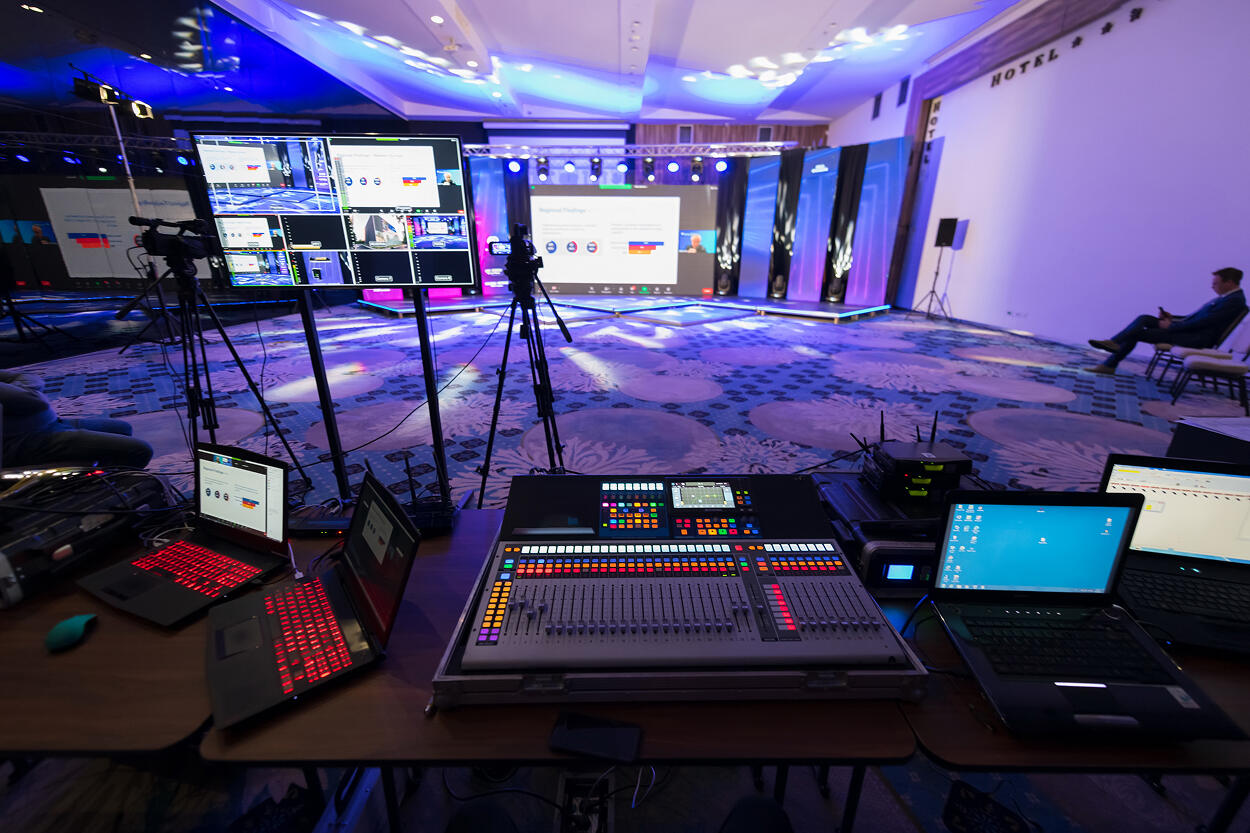Edge AI on the Frontline: FPGA and ASIC for Live Streaming Transcoding & Analytics

In live production environments, latency, reliability, and throughput are non-negotiable. When switching to IP and AI-enabled workflows, the traditional software-only stacks often struggle to keep up with real-time demands. That’s where Edge AI, running directly on FPGA or ASIC hardware, becomes a game changer: performing transcoding, object detection, motion tracking, and analytics tasks right at the source, rather than sending everything to the cloud. This approach reduces roundtrip delays, minimizes bandwidth costs, and ensures consistent operation during spikes or network disruptions.
In this article we examine why Edge AI matters in live production, how FPGA / ASIC components fit into media pipelines, real-world architectures and tradeoffs, implementation challenges, and a roadmap for integration.
The imperative for Edge AI in live media
Live workflows—sports, concerts, broadcasting, virtual events—demand ultra-low latency, high availability, and resilience under load. In distributed setups, sending raw video to remote cloud servers for analysis or transcoding introduces delay and vulnerability to network congestion. Edge AI solves this by enabling processing locally, close to cameras, ingest nodes, or edge servers.
Moreover, as AI-based features—scene analysis, object overlays, live metrics, dynamic graphics—become integral to modern productions, relying on central compute for real-time inference becomes a bottleneck. Edge AI offloads these tasks to hardware-accelerated modules in the production chain. The result: continuous live analytics, transcoding, and decision-making without introducing visible lag.
Performance, power efficiency, and determinism are essential. FPGA and ASIC platforms excel here: they offer tailored, pipelineable logic that delivers predictable latency and high throughput with lower power than general-purpose CPUs or GPUs.
Key functions to accelerate at the edge
In live production, several tasks benefit most from hardware acceleration:
Real-time transcoding / format conversion
Converting camera feeds or intermediate formats into delivery-friendly encodings (H.264, HEVC, AV1) in sub-millisecond windows is crucial. On FPGA, you can implement video pipelines combining decoder + filter chain + encoder, customized for your bitrate ladder and latency constraints. Many commercial FPGA solutions already exhibit efficiency gains of 30–100× in performance-per-watt for media tasks. AMD+1
Live AI analytics / vision tasks
This includes object detection, tracking, face recognition, motion analysis, scene classification, or region-of-interest (ROI) detection. Hardware-accelerated inference engines on FPGA/ASIC enable these tasks to run in parallel with video pipelines without blocking them. Architectures like SATAY (streaming toolflow for YOLO models) show that FPGA-based object detection can match GPU latency while consuming less power. arXiv
Metadata extraction & overlay logic
Edge AI modules can tag sports events (e.g., ball tracking, score overlay zones), detect visual triggers (logos, markers), or analyze frames for anomaly detection. By embedding these decisions close to video sources, you reduce bandwidth by transmitting only enriched streams or alerts.
Adaptive encoding / smart bitrate control
By combining analytics (e.g. motion intensity, scene complexity) with encoding modules, FPGA logic can dynamically adjust bitrate allocation, quantization parameters, or scaling on the fly. This “analytics-driven transcoding” yields quality-efficiency tradeoffs that static encoding pipelines cannot.
Early QC / health checks
Edge AI can monitor video quality metrics—frame drops, color shifts, flicker—at ingest time, raising alarms before errors propagate downstream. This early detection helps prevent “bad feeds” reaching the assembly stage.
Architecture patterns for edge-accelerated live production
Designing a robust Edge AI pipeline requires modularity, low-latency paths, and graceful fallback mechanisms. A typical architecture might look like:
- Source + capture module
Cameras or capture devices feed raw video (or mezzanine stream) into FPGA/ASIC-based modules. Time stamps, sync signals, and metadata are passed alongside.
- Edge AI processor block
This module runs inference logic (object detection, ROI selection, motion sensors) and outputs metadata or overlays. It often shares the pipeline with transcoding logic or sits in a parallel path.
- Transcoding / encoding block
Using hardware accelerators, the video is downscaled, filtered, or re-encoded into delivery variants. The encoder may consume analytics feedback for dynamic bitrate or ROI-based adjustments.
- Edge buffer / packaging interface
Accepts encoded segments, wraps in transport (e.g. MPEG-TS, DASH fragments), and forwards to CDN or aggregator nodes. This often includes error correction, jitter buffers, and adaptive timing.
- Control / orchestration / feedback
A microcontroller, control plane, or small CPU orchestrates interactions: config updates, metadata routing, fallback to CPU modules on overload, and communication with upstream control systems.
- Monitoring & fallback logic
The module continuously monitors latency, temperature, resource usage, and errors. In case of overload or fault, it can degrade gracefully (e.g. switch to software fallback, reduce resolution) to maintain continuity.
FPGA vs ASIC: tradeoffs and when to choose
FPGA advantages
- Reprogrammability: you can reconfigure logic after deployment, support new codecs or AI models.
- Lower development risk: prototyping is easier with FPGAs than designing full ASICs.
- Shorter time to market, easier updates and patches.
- Good for initial deployment phases or when models evolve frequently.
ASIC advantages
- Maximum efficiency per watt / per mm²: once taped out, ASICs yield better cost-performance for large-scale production.
- Lower unit cost in volume deployments, better thermal behaviour.
- More deterministic timing and less configuration overhead.
Many projects begin with FPGA for flexibility and later migrate stable modules into ASIC once requirements solidify. Hybrid SoCs combining FPGA logic and hardened ASIC cores are also common. Promwad’s Edge AI modules built on FPGA platforms (Xilinx Alveo, Lattice CrossLink-NX) perform transcoding (H.264 / HEVC / AV1) and analytics within a single ST 2110-22 stream, achieving < 10 ms latency and supporting partial reconfiguration of AI models in real time.
Implementation challenges and considerations
Deploying Edge AI in live systems is not trivial. Here are core challenges to address:
Latency and determinism
Live production tolerates only microsecond-to-millisecond variance. AI pipelines must be deeply pipelined and flattened to avoid unpredictable stalls or memory bottlenecks.
Resource constraints & memory bandwidth
On-device logic must manage limited BRAM, external memory, and I/O throughput. Many AI models must be quantized, pruned, or partitioned for this environment. Toolflows like SATAY automate mapping YOLO networks to FPGA with streaming architectures. arXiv
Model updates & flexibility
Live operations evolve: new camera types, new AI features, algorithm updates. Design must allow partial reconfiguration or logic overlays to update AI without full redeployment.
Power, heat, and reliability
Edge hardware must cope with power constraints, temperature fluctuations, and long continuous operations. Ensuring stable power delivery, cooling, and thermal monitoring is essential.
Integration & synchronization
Synchronization with audio, external metadata, frame timing, camera control, and inter-device latency must be flawless. Any drift or misalignment could break production integrity.
Fallback and redundancy
If the hardware AI pipeline fails or becomes overloaded, fallback to CPU/GPU software paths, or gracefully degrade resolution or FPS. You must detect and manage these transitions without operator impact.
Debug, observability, and calibration
Edge systems require visibility: trace logs, performance counters, buffer occupancy, and error detectors. Without observability, diagnosing edge failures in event time is difficult.
Standards compliance
Output must comply with broadcast and streaming specs (color spaces, frame alignment, HDR standards, timecode), even after AI processing.

Use cases and emerging research
- The Xilinx / Aupera platform demonstrates FPGA-based hardware pipelines with built-in AI detectors, able to transcode many 1080p30 channels in a compact footprint, and deliver analytics at high throughput. AMD
- SATAY, a toolflow for mapping YOLO models onto FPGA in streaming form, shows that real-time object detection with ultralow latency is achievable and competitive with GPUs. arXiv
- Edge-AI surveys emphasize that real-time video analytics at the edge require care across the full lifecycle of data ingestion, model adaptation, and fallbacks. techrxiv.org+1
- FPGA integration into AV systems is increasingly common: in signal processing pipelines, FPGAs help with filtering, color conversion, and AI-based enhancements in real time. SamimGroup
In academia, new projects like OCTOPINF propose workload-aware inference serving on edge video analytics platforms, adapting resource allocation in dynamic environments to maintain real-time constraints. arXiv
These works show that high-performance AI + media pipelines on edge hardware are no longer theoretical — they are practical and increasingly deployed.
Roadmap for integration at Promwad
- Pilot module selection
Choose a high-impact, manageable AI task (e.g. object detection or ROI-based transcoding control) and integrate it with an FPGA transcode pipeline.
- Define latency budgets & metrics
Measure acceptable latency, frame drops, throughput, and failure thresholds. Use these as design guardrails.
- Prototype with FPGA development boards
Start with off-the-shelf FPGA dev kits and open-source accelerator cores. Map transcoder + AI pipeline and validate in lab.
- Optimize model & pipeline for edge
Quantize, prune or simplify AI models. Organize pipelined data paths, align memory bursts, and minimize contention.
- Integrate into live ingest chain
Embed module before encoding or at capture, ensuring synchronization with camera control and timing signals.
- Add fallback / monitoring logic
Create mechanisms to detect overload, switch to software mode, and monitor health of FPGA modules.
- Iterate and evolve to ASIC or hybrid
Once stable, migrate mature modules to ASIC or SoC-based cores. Keep AI logic modular for future updates.
- Scale across venue nodes
Deploy edge modules at multiple ingress points, perhaps cascading analytics or forwarding enriched streams rather than raw traffic.
- Measure operational impact
Track metrics: latency improvement, bandwidth saved, AI features leveraged in real time, failure rates, and integration costs.
- Support feedback & upgrade path
Build secure firmware / bitstream update pipelines and monitor field performance for retraining or architectural tweaks.
With this roadmap, Promwad can enable clients to adopt edge AI in production contexts — starting conservatively and growing toward full, hardened deployments.
AI Overview: Edge AI for Live Production
Edge AI deployed on FPGA or ASIC hardware transforms live production by bringing transcoding and analytics into the signal path. Instead of routing raw video to cloud compute, intelligent modules at the source perform inference and encoding with microsecond-level latency.
Key Applications: dynamic transcoding, real-time object detection and tracking, content-aware bitrate adaptation, metadata overlay systems, early ingest QC.
Benefits: ultra-low latency, reduced bandwidth use, deterministic performance, local resilience to network issues, offload of compute from central servers.
Challenges: resource constraints and memory contention, model calibration on hardware, fallback mechanisms, synchronization, hardware reliability under continuous load.
Outlook: by 2028, integrated FPGA/ASIC AI modules will become standard in large-scale live production setups. Hybrid SoC designs and partial reconfiguration techniques will enable live model updates. AI-augmented media pipelines will evolve into self-optimizing, end-to-end systems.
Related Terms: on-device AI, streaming acceleration, pipelined inference, model quantization, AI-assisted encoding, edge video analytics, low-latency inference, SoC integration, hardware accelerators.
Our Case Studies





